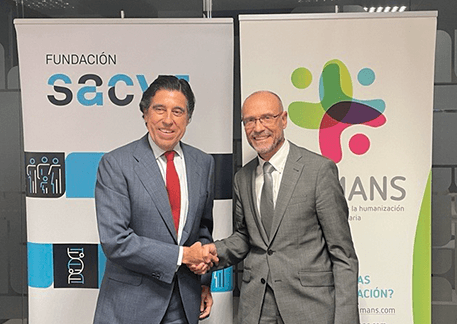Manuel Manrique, Chairman of the Sacyr Foundation and Julio Zarco, Chairman of Fundación Humans, have signed a collaboration agreement to develop the project “Architecture and engineering and humanization”, that will create an observatory to analyze the humanization of architecture in healthcare.
Architecture in healthcare spaces has major impact on patients’ recovery. A friendly and comfortable physical environment (well-illuminated spaces, soft colors, natural materials, and a good layout) can help reduce stress and anxiety levels, promoting a faster recovery.
Moreover, an adequate architectural design can improve the efficiency and workflow of healthcare professionals. Spaces must be humanized aimed at co-habitation and putting respect and individuals’ dignity first, as well as their intimacy.
Manuel Manrique, Chairman of Sacyr and the Sacyr Foundation said: “This initiative builds on our goal to continually improve our healthcare projects. This way, we actively contribute to caring for people and our environment. Fundación Humans is a stellar collaborator to steer design and construction in healthcare centers to provide the best possible service to patients and healthcare professionals for the health of all”.
To Julio Zarco, Chairman of Fundación Humans, this initiative is “a major step in humanization because it brings us closer to the ultimate goal sought in terms of humanization: creating welcoming, respectful and adequate spaces, where patients feel safe and comfortable, as well as cared for”. “I thank the Sacyr Foundation for their commitment and participation in this project. Thanks to their help, we will set up an observatory to collect data, studies and best practices in architecture and humanization”, he added.
The project consists of two phases: a first stage including a nation-wide analysis and workshops with patients, relatives, and professionals to define strategic lines to promote a humane architecture in healthcare.
The second phase consists of brainstorming specific ideas and defining indicators to measure to what extent humane architecture has been applied in healthcare centers and compile them into a benchmark document that condenses all the information.
